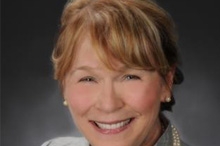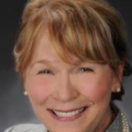
 Dee Ann Newell is being honored as a Champion of Change for her dedication to the well-being of children of incarcerated parents.
Dee Ann Newell is being honored as a Champion of Change for her dedication to the well-being of children of incarcerated parents.
My work for the past 25 years on behalf of the children of incarcerated parents I regard as first, an effort to gain human rights for our prisoners and their families. Further, it is a children’s rights issue, as these children bear the burden of the mass incarceration insanity in this nation. It is work that is deeply satisfying in the individual cases where interventions matter to the children and their families. However, the recognition of the needs and best interests of these children has been barely touched, with sporadic initiatives to support them and their families, while valuable, have not been sustained with steadfast funding or even public awareness. Their numbers swell, the research evidence multiplies, telling us of the many burdens these children bear, not only during their incarceration, but prior to their parent’s involvement in the criminal justice system, these children were accumulating a volume of risk factors exceeding those of other at-risk children and then the new cascade of risks that accompany the incarceration of a parent. The most obvious ones include the separation from their parent; they fall more deeply into poverty and the risks that are inherent to poverty alone. The roles of shame and stigma lead these children too often keeping their fears and concerns for their parent under wraps. The oft common silence of these children is deafening, and the invisible pain present mental health and even physical health risks for the children.
Further, these children are officially stigmatized by an erroneous statistic that is carelessly used by organizations that do not seek out the source of such a statistic that hails these children have a six times greater risk—I have even seen it posited as a 7 or 8 times greater risk of future incarceration. It is not a researched-based statistic and can lead policy makers into ignoring these “incubating criminals” and further devaluing these children who often feel isolated and unworthy. There are only a few times that we, in the sense of “we”, as represented by our government, determine the need to separate a child and a parent. One is appropriate and offers an array of services for the child and the parent, and that is our federal and state child welfare system. The other is when we sentence a parent to prison, but in this case, the children are virtually ignored, except in some locations. The judges and the attorneys do not consider the risk to the children of being separated by the punishment of incarceration used by our criminal justice system, viewing the convicted parent as a stand-alone matter—exceptions were seen in the Enron case several years ago when the judge staggered the parents’ sentences so the children would not be without a parent. But does that happen to a poor, African-American woman in my state’s Delta region, or anywhere else in my state? No. Indeed, judges often say they do not wish to have the children considered in their sentencing. Yet, The American Academy of Pediatrics views a parent-child separation as the most serious intervention by the state into the life of a child, and stipulates that it should be done as a last resort. But we do it every day, in courtroom after courtroom. For many families, a harsh sentence can be the death knell for their family, especially if the child is in foster care and the public child welfare system ifs forced by the timeline of the federal Adoption and Safe Families Act and parent inside is unable to utilize the exceptions to the ASFA timeframe. Some states have been successful in expanding the time frame, but it is not true in most states and the ongoing harshening of sentences, so politically useful, results in the dismantling of the family.
I have been blessed in my work in Arkansas to have so many partners and collaborators to work on behalf of the children. In 1994, a coalition of 32 organizations came together to bring public awareness to the needs of these children and their families, and in 2002, the coalition voted to become a 501©3 organization whose sole mission was to serve the children and their families. To this day, we consider our clients to be the families impacted by the criminal justice system, children, incarcerated parents, homecoming parents, and the custodial parents and kinship caregivers who step forward to care for the children. Each family member has needs that, when met, will serve the best interest of the children.
We have provided an array of services customized to the kinds of interventions we find effective in meeting our standard of safety, security, stability, connection to the parents, support for both the children and their caregivers, and the macro-practice of engaging the communities throughout our state in caring and valuing these families. We provide support groups for the caregivers in the deepest pockets of poverty in our state and in the areas with the highest rates of incarceration. We have community peer support groups for the children and youths, and school-based peer support and advocacy groups for youth in school-based services. We offer home visiting services for the grandparents and custodial parents of children from 0 through age 12 years. We teach parenting in our prisons and jails, and provide re-entry planning and family mentoring for the parent, caregiver and parent during pre-release and for one year following release and longer. Efforts have been made to offer a menu of interventions to serve mainly as healing processes and tools found efficacious, ranging from family and financial literacy, civil legal services, the arts with the children and with the caregivers, dialogue journaling, shaping your narrative, co-parenting agreements, visitation transportation, parenting and family mentoring, and services that the families tell us are needed, including health information, mental health counseling, family reunification services, support when the children are in foster care, and a Toll-Free Warm Line whereby our trained caregivers provide information to others about resources and referrals, along with troubleshooting individual problems with those outside of our reach. Numerous journal articles, a monthly newsletter, and publications of resource directories are available on our donated website, www.arkansasvoices.org
We regard our work as demanding a certain amount of public advocacy and we sponsor the Arkansas Anti-Shackling Coalition, the Arkansas Restorative Justice Coalition, the Arkansas Kinship Caregiver Network, the Arkansas Policy Initiative for Children of Prisoners, and the Family Re-entry Coalition.
Most importantly, the services are reviewed by our clients, including our youth, with innovations coming from the family members and their lenses insure that the services are relevant and significant to those we seek to support. A significant outcome is a 12% recidivism rate among1,026 respondents over a ten-year period, meaning fewer of the children having to cope with the loss of a parent on a repeated basis, a very positive outcome for the viability of the family, too.
Dee Ann Newell is the Executive Director of Arkansas Voices for the Children Left Behind.


